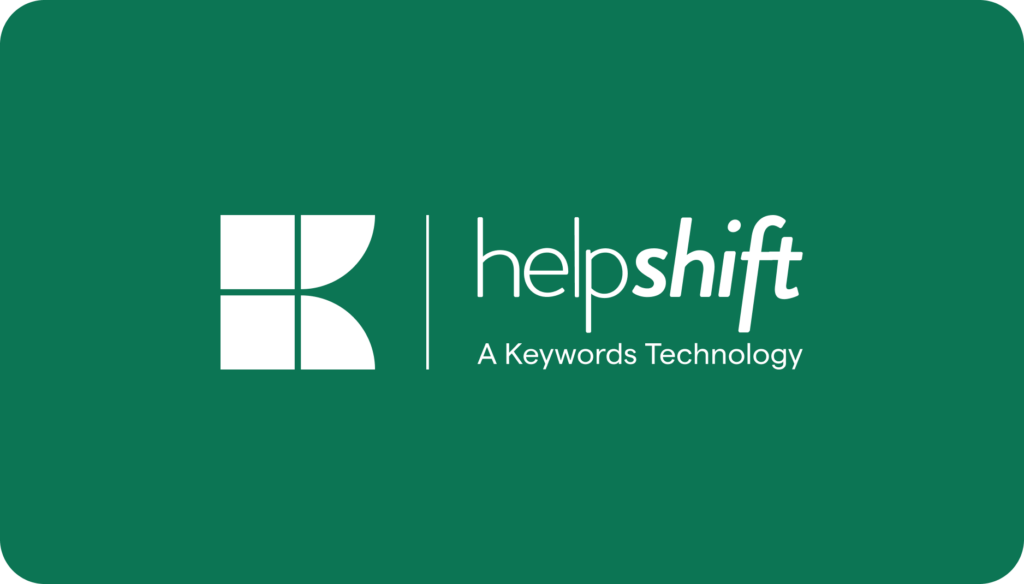💬: Hey, where’s my package? — Instant answers, no hold music.
🎮: Can you trade me that rare sword? — Non-Playable Character (NPC) responds like a pro
💬: What’s 2+2? — Okay, sometimes it’s the little things.
This is how everything began…From simple Q&As to handling complex queries, text-based conversational AI has redefined how we communicate — just a message away.
The truth is traditional support can’t keep up with customers who expect answers at random times.
Instead, conversational artificial intelligence solves customer problems instantly, with a pop-up appearing in the right-hand corner of the screen.
Conversational AI for customer service reduces response times from hours to seconds and slashes operational costs by half. Let’s see how.
What is Conversational AI in Customer Service?
Conversational AI for customer service is an advanced support technology that automates interactions through Natural Language Processing (NLP) and Machine Learning (ML). Unlike basic chatbots with rigid scripts, It provides faster support by reading context, delivering relevant solutions, and engaging in human-like conversations.
It recognizes speech and text inputs, comprehends intent, mimics human language, and provides multilingual support.
For business leaders, it impacts two metrics:
- Customer Lifetime Value (CLV): By delivering faster, more efficient support, it keeps customers satisfied and loyal
- Customer Acquisition Cost (CAC): The ability to handle more queries without increasing headcount reduces operational costs
Unlike the age-old rule-based chatbots, modern conversational AI learns (with every conversation) to improve response accuracy and relevance.
“The use of AI in customer service is a great example of how AI and humans can work together. Training AI to understand language, determine intent, and triage problems through well-defined workflows helps offload the grunt work from the agents, allowing them to focus on problem-solving, creative solutions, and empathy for the customer.”
– Erik Ashby, Senior Director and Head of Product at Helpshift.
Key Components of Conversational AI
Technical terms won’t solve support tickets. Your customers need solutions in their language at their convenience. For that, the following components of conversational AI need to work together.
1. Natural language processing
NLP decodes customer messages like a support agent who speaks multiple languages. When players write “can’t connect,” “connection error,” or “game offline,” NLP recognizes these variations as network issues. It spots problem types, urgency levels, and key details that help deliver the right solutions.
2. Dialog manager
Like a support lead who remembers every customer interaction, Dialog Manager tracks your conversation’s progress. It knows which solutions you’ve tried, what worked, what didn’t, and what to try next. When you say “that didn’t work,” it remembers which fix you attempted and moves on to better options.
3. Natural language generation
NLG turns raw data into clear support messages. After understanding your customer’s problem and deciding how to help, NLG crafts the response.
For example, when detecting a server connection problem, rather than displaying “Network_Error_0x8007”, NLG creates readable responses: “We see you’re offline. First, check if your WiFi is connected, then try logging in again.”
These components work together to build good conversational AI customer service. But most support solutions promise automation, but few deliver real results. The difference lies in training. AI must learn from millions of customer conversations to understand and solve problems.
For example, Helpshift built its AI models by training the machine using billions of support interactions. The system automatically connects customers to knowledge base articles that may solve their problems before you have to get a human agent involved. It offers a self-serve experience and in-chat instructions based on customer intent.
This smart workload distribution helps your agents reduce response times and increase customer satisfaction score (CSAT).
How Does Conversational AI Work in Customer Service?
Now, let’s put all of this into context. Say there’s a gaming support issue; here’s how the conversational AI works, from receiving the user query to delivering the solution.
Input processing
When players message support, the system receives their text requests. A player having trouble with in-game purchases might write: “Bought 1000 gems but didn’t get them. Order ID #GEM789.” The system takes in this raw message.
Natural language processing (NLP)
NLP digs into what the player needs. Our example identifies this as a missing purchase issue. It picks up details: the purchase amount (1000 gems), the problem (items not received), and the order reference (ID #GEM789). It understands this isn’t a gameplay issue or connection problem but a transaction concern.
Players phrase the same problem differently:
- “Gems purchase not showing up”
- “Payment went through, but no gems”
- “Where are my gems? Order #GEM789”
NLP recognizes these variations point to the same issue.
Dialog management
The dialog manager makes sure we have every detail needed to help. For this missing gems ticket, it checks:
- Is the payment confirmed?
- Has the transaction been processed?
- Was there a delivery delay?
It asks specific questions if crucial information is missing: “Could you confirm the email address linked to your purchase? This helps us track your transaction faster.”
Natural language generation (NLG)
This step turns raw data into clear updates. Instead of:
TRANSACTION_STATUS: COMPLETED
DELIVERY_STATUS: PENDING
DELAY_TIME: 5_MIN
It creates messages in customers’ language like: “Your payment for 1000 gems has been confirmed. Due to high server traffic, there’s a 5-minute delay in delivery. Your gems will appear automatically; there is no need to restart the game.”
Output generation
It’s the final step that delivers this response to the player in their chat window with clear information about their purchase status. All this happens in seconds, and player concern now becomes reassurance.
| 💡 Quick win: Optimize your AI’s learning curve – Export your best-performing support conversations from the last quarter – Identify the top 3 scenarios where agents successfully turned frustrated customers into satisfied ones – Feed these conversations to your AI to learn better response patterns |
Benefits of Conversational AI for Customer Service
Conversational AI is an asset for your customer service teams. Here are seven reasons why.
Get more done with your current team
Improve agent efficiency as your team spends less time on repetitive questions about order status, account access, or basic troubleshooting. Conversational AI handles 3.5x more tickets without adding headcount. This means your existing team can manage higher ticket volumes without getting overwhelmed or compromising on quality.
Expand your global reach
Break down language barriers in customer support without hiring multilingual teams. Multilingual customer support accurately detects and responds in customers’ preferred languages to maintain consistent service quality across regions. Enter new markets confidently and serve diverse customer bases with standardized support processes.
Keep your support running 24/7
Ensure customers get help whenever they need it, even outside business hours. Conversational AI provides round-the-clock first-level support with common queries and urgent issues immediately. Your customers don’t have to wait for the next business day to get basic problems solved.
Make support data work for you
Conversational AI for customer service helps your teams track which issues come up most frequently, identify emerging problems, and understand where customers get stuck. With such analytics and solid data, you improve self-service resources, refine product features, and train your team on what matters most to customers.
Connect with customers wherever they are
Meet customers on their preferred platforms: email, messaging, or in-app support. An omnichannel support system promises consistent service quality across all channels. Your team maintains context across interactions by avoiding repetitive customer questions.
Grow your support without growing your team
Scale customer support as your business expands. Handle increasing support volumes without proportional team expansion. Your support system adapts to growth spikes during product launches or seasonal peaks.
Turn first-time buyers into loyal customers
Customers who receive fast, relevant solutions are more likely to make repeat purchases and recommend your business to others. You’ll also see higher CSAT scores when customers get instant, accurate answers. So, no customer frustration; it only builds trust.
Types of Conversational AI Technology in Customer Service
Let’s look at the types of conversational AI for customer support that makes these benefits possible.
- Rule-based chatbots: When your support needs to follow clear patterns, rule-based chatbots deliver consistent results. Your team defines specific conversation paths for common customer requests, and like a well-trained support specialist, they stick to proven scripts for maximum reliability.
- AI chatbots: These solutions understand customer intent and language variations in support conversations. They process customer messages, grasp context, and provide relevant answers without following rigid scripts. These systems adapt and learn when customers phrase questions differently or need detailed solutions.
- Hybrid chatbots: Want the best of both worlds? Hybrid chatbots combine reliable rules with smart learning. Your team gets predictable responses for routine issues plus flexibility for unexpected questions. The technology uses rules for sensitive operations like payment processing, while AI manages general support queries.
- Virtual assistants: They manage end-to-end customer conversations while keeping track of context and history. Beyond simple queries, they handle complex tasks like account management or technical troubleshooting. These are great options to maintain conversation flow across multiple requests.
- Voice assistants: While not common in standard customer service, these systems shine in specific scenarios. They process spoken requests into instant actions, which are useful for accessibility needs or hands-free support situations. For example, Google Assistant processes language in real time, handling commands without delays.
- Interactive voice response (IVR) systems: These systems organize customer calls efficiently through voice and keypad inputs. During peak hours, they handle routine tasks like FAQ responses and order tracking. Support teams use them to route calls effectively and maintain service quality during high-volume periods.
Conversational AI for Customer Service Examples and Use Cases
Now, look at how top companies use conversational AI to solve business challenges.
Banking: Bank of America’s virtual assistant Erica helps 1 billion customers annually to manage their money better. It sends timely alerts about unusual charges, suggests smart spending habits, and teaches practical money skills. Most importantly, it catches potential fraud before customers lose money.
Retail: Sephora shows how personalized support drives sales and loyalty. Their Virtual Artist helps customers try makeup virtually and find perfect products. Shoppers book store appointments, check product availability, and even identify makeup from celebrity photos.
Human Resources: HR teams use support conversations to find great talent faster. Take Hewlett Packard: their hiring system matches candidate skills with perfect job openings. In early 2023, website visits doubled to 950,000, with 26% of visitors becoming HP employees. The system handles initial screening while HR focuses on choosing the best cultural fit.
Gaming: Studios handle massive support volumes during launches and tournaments. Huuuge‘s success story shows how instant problem-solving keeps players happy. When millions log in simultaneously, automated systems tackle connection issues and purchase problems across languages and time zones.
Marketing: Mountain Dew’s DEWbot connected with gamers during their “Rig Up” Twitch series, earning a Short Award nomination. Support messages evolved into genuine fan engagement, proving that solving problems builds lasting customer relationships.
How to Implement a Conversational AI Strategy in Customer Service
Every support crisis begins with a moment of truth. For gaming companies, it’s often launch day. For eCommerce, it’s a holiday rush. Moments like these define customer loyalty, and you have a smart conversational AI strategy in place. We’ll show you how to implement one.
1. Understanding what your customers truly need
If your customer, Laura, is troubleshooting a connection issue during an online tournament at midnight, she needs a solution right now in clear and simple terms. A “We’ll get back to you soon” message is the last thing she wants to see.
To create an effective AI strategy, analyze what your customers frequently ask. Use existing support data to map the most common problems and pinpoint pain points.
Ask questions like:
- What are the top three issues customers raise?
- Which problems are time-sensitive?
- Are customers asking follow-up questions because the initial responses were unclear?
2. Crafting conversations that solve, not just respond
For every query, design workflows that address the issue fully. For example, when Laura reports a “server connection error,” the conversation should not end with “server connection error.” Instead, it should follow up with next steps:
“Your connection is unstable. Try switching to a wired connection or closing background apps. If the issue persists, we’re here to help.”
Test these flows repeatedly with real customer scenarios to make sure they’re seamless.
3. Integrating AI into your support system seamlessly
Introducing AI shouldn’t disrupt your existing processes. Instead, integrate it into tools your team already uses.
For instance, Helpshift’s conversational AI plugs directly into customer service platforms, reducing setup hassle.
A quick tip: Start small. Automate FAQs or repetitive tickets before scaling to complex interactions.
4. Training your team to lead with confidence and AI
Your team is key to conversational AI success. Equip your agents with training on how AI works and how it assists. For example, when Laura escalates her issue, the agent should see the AI’s previous interactions and step in when needed. Agents become more confident and skilled in managing AI-assisted workflows with regular training.
5. Learning, adapting, and growing with insights
Every conversation is a learning opportunity. Use AI to track patterns in customer concerns and improve over time. For instance, if many customers like Laura report lag during peak hours, flag this as a process improvement area. Regularly update your AI with these learnings to keep it evolving alongside your customers’ needs.
How Helpshift Uses Conversational AI to Enhance its Chatbots
Running a support team? Here’s how Helpshift’s tech makes your life easier.
✔ Smart support tools: Four purpose-built bots handle different support scenarios. Need to check user identity? There’s a bot for that. Want to guide customers to the right FAQ? Done. Looking to gather post-resolution feedback? Covered. Plus, custom bots adapt conversations based on what customers actually need.
✔ Reading customer intent: Ever wished you could understand exactly what customers want before they spell it out? Smart Intents technology reads customer messages and picks up on tone, helping your team tackle the most urgent issues first. Teams using this feature resolve 70% of tickets faster – that’s real-time saved.
✔ Precision in every answer: No more robotic responses. Using advanced Retrieval-Augmented Generation, Helpshift’s AI-powered answers ensure every automated response draws from verified knowledge base content. When customers ask questions, they get relevant solutions, not generic replies.
✔ 24/7 self-help support: The platform’s self-help AI serves as your always-on support system. Better yet, it automatically translates content across languages. No more juggling translation agencies or worrying about inconsistent messaging across regions.
Change Your Support for Better with Helpshift
Automated support isn’t just a backup option. The tools and strategies we’ve explored show how it’s becoming essential for companies focused on growth.
Helpshift builds on this foundation. The platform helps support teams handle more tickets without adding headcount, keeps quality consistent across languages, and gives players quick solutions at any hour.
Major gaming studios are already using these capabilities to support millions of players worldwide (look at our case studies). Want to see these features in action? Start your free trial today.
Frequently asked questions
1. What is conversational AI in customer service?
Conversational AI in customer service is a support technology using NLP and ML to automate customer interactions into human-like conversations. It understands context and provides real-time relevant solutions across multiple communication channels.
For example, when a gaming customer messages a support team about a missing game purchase, the AI reads the message, identifies key details like order numbers and specific issues, and then guides the user to a solution.
2. What are conversational AI examples?
Conversational AI examples span different industries:
- Financial providers use virtual support to resolve account disputes and process claims within minutes.
- When gaming tournaments spike in activity, support systems instantly handle technical glitches and connection problems.
- Retail companies track orders, manage returns, and answer product questions — all while speaking the customer’s language.
3. What is the best AI for customer service?
The best conversational AI depends on your company’s challenges. Leading companies prioritize systems that understand customer questions accurately and work smoothly with their existing tools. Gaming studios and retail brands often choose Helpshift because it processes high ticket volumes and delivers consistent results.



